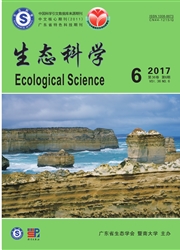

 中文摘要:
中文摘要:
豆科植物在青藏高原高寒草原广泛分布,有离散和集中两种分布格局。集中分布格局中,豆科植物生物量约占总生物量的30%以上;离散分布格局中,豆科植物生物量一般不足总生物量的10%。在西藏纳木错高寒草原,选取豆科植物集中分布区和典型紫花针茅草原作为豆科和非豆科优势植物群落的代表,测定和分析两群落土壤碳氮储量、温室气体通量及生态系统CO2净交换(NEE)的区别,以初步研究两群落在碳氮储量和收支中的差异,为深入研究豆科植物集中分布的形成机制提供最基本的数据支持。结果表明,与非豆科优势植物群落相比,(1)豆科优势植物群落土壤氮储量增加不显著,土壤氮含量和N2O排放通量增加不显著,非豆科植物的氮含量显著增加。(2)豆科植物优势群落土壤碳储量增加不显著,非豆科植物地下部分碳含量显著增加,生态系统呼吸(ER)显著增加的同时光合固碳总量(GEP)也显著提高,但光合固碳总量(GEP)显著大于生态系统呼吸(ER),使CO2净交换(NEE)显著增加,CH4吸收显著降低。
 英文摘要:
英文摘要:
Legumes are widely distributed in alpine grasslands with discrete distribution and concentrated distribution patterns. In a legumes concentrated distribution area, legumes alone account for more than 30% of total biomass, while in the discrete distribution area, legumes only account for less than 10%. In this study, we investigated the difference of the carbon and nitrogen reserves in soil and plants, greenhouse gases fluxes, net ecosystem CO2 exchange(NEE) between legume(LDC) and non-legumes dominant community(NLDC) in Nam Co Alpine Steppe, Tibetan Plateau, in order to investigate the differences in carbon and nitrogen storage and fluxes between the two communities, and try to provide basic data for the formation mechanism for legume centralized distribution. The results showed that(1) the soil nitrogen reserves and soil N2 O fluxes were not significantly different between LDC and NLDC, but the nitrogen content of the aboveground non-legumes increased significantly in LDC.(2) Soil carbon storage was not significantly different between LDC and NLDC. While for the LDC, the carbon content of the below ground non-legume significantly increased, and the ecosystem respiration(ER) and the gross ecosystem photosynthesis(GEP) also significantly increased. The GEP was significantly greater than the ER, resulting in NEE increased significantly. The CH4 absorption of LDC was significantly lower than NLDC.
 同期刊论文项目
同期刊论文项目
 同项目期刊论文
同项目期刊论文
 Plant and soil responses of an alpine steppe on the Tibetan Plateau to multi-level nitrogen addition
Plant and soil responses of an alpine steppe on the Tibetan Plateau to multi-level nitrogen addition Considerable methane uptake by alpine grasslands despite the cold climate: In situ measurements on t
Considerable methane uptake by alpine grasslands despite the cold climate: In situ measurements on t Three-year study of CO2 efflux and CH4/N2O fluxes at an alpine steppe site on the central Tibetan Pl
Three-year study of CO2 efflux and CH4/N2O fluxes at an alpine steppe site on the central Tibetan Pl 期刊信息
期刊信息
